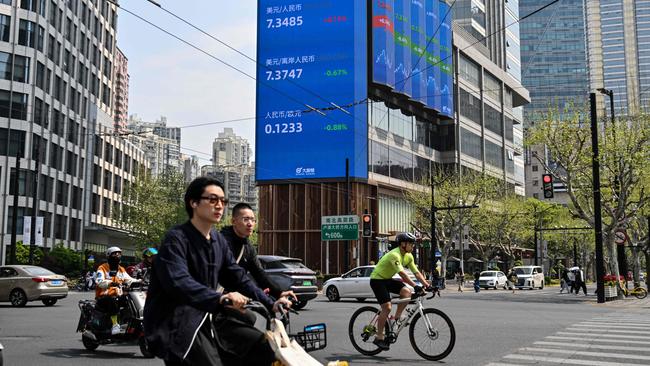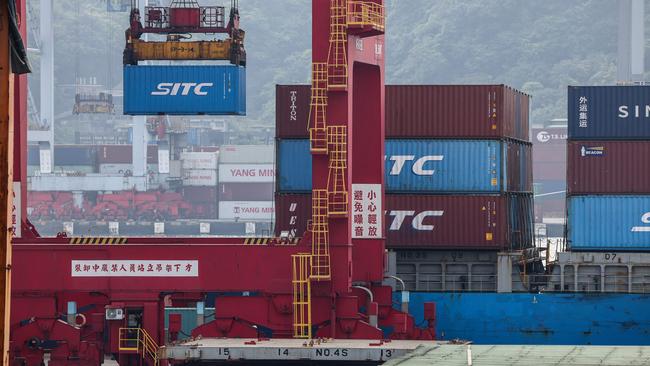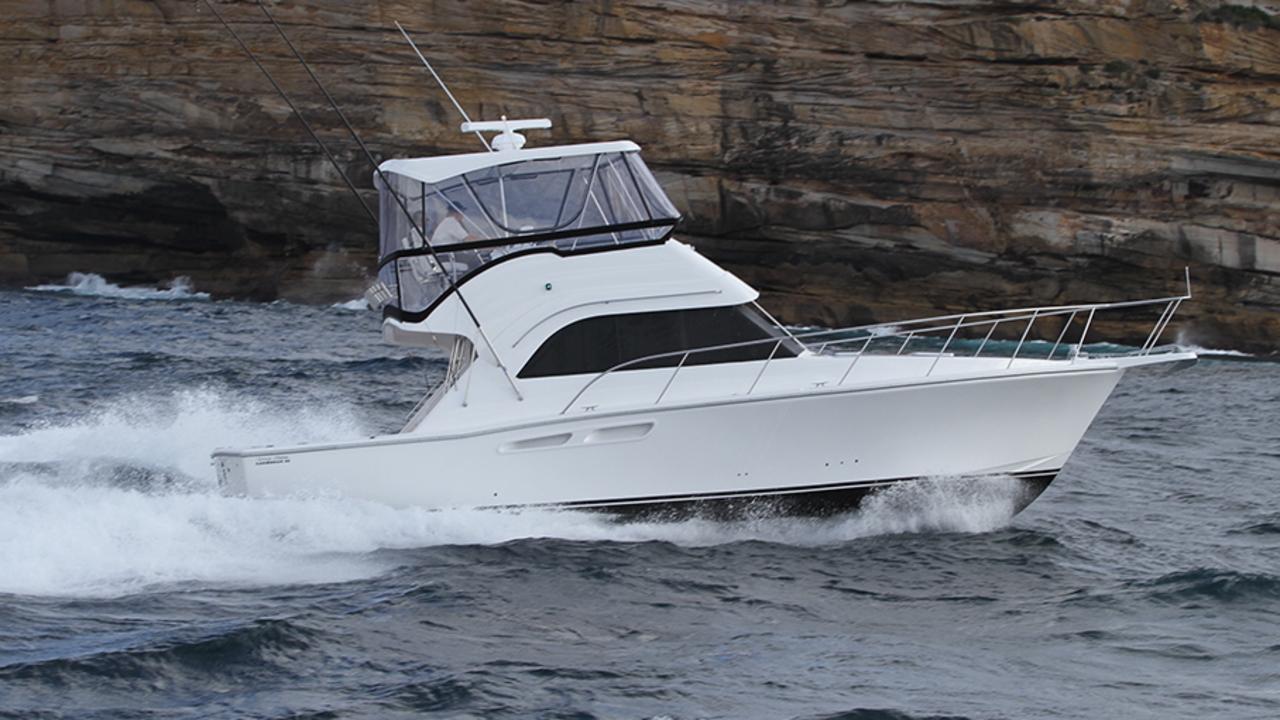China’s now a much nimble and fitter opponent than Trump encountered during his first term
Donald Trump has picked a trade fight with an economic giant in China that has changed considerably since he challenged it during his first term in office.

As the world watches the escalating trade clash between the US and China, it is a very different China responding to Donald Trump’s threats than it was in his previous presidency.
While smaller countries such as Australia have to play nice with the US over its tariff threats, China is negotiating from a position of greater strength and confidence as the world’s second-largest economy, one which is much more self-reliant than in the US-China trade wars of 2016-2020.
Its economy may not be as robust as it has been, but at 5 per cent it is still growing at a faster rate than most others (well above the rates in Australia and the US) and its exports to the US now represent a smaller proportion of its trade, at 13 per cent last year, down from 21 per cent in 2016.
Its economy is now more domestically focused than it has been in recent times.
Australian business leaders making visits to China report how much its industry, including steelmaking and manufacturing, has been modernised in recent years with hi-tech factories using sophisticated robots.
The world of Chinese “peasants” so disparagingly mentioned by US Vice-President JD Vance, author or Hillbilly Elegy, is long gone, replaced by a country laced with a network of fast trains, state-of-the-art airports and highways and increasingly hi-tech communications, and a domestic population that is one of the most tech and e-commerce savvy in the world.
It is also the largest producer and largest market for electric vehicles, with global giants such as BYD, and solar panels and other forms of renewable energy.

US chip sanctions imposed by the Biden administration have accelerated the development of its local technology industry, accelerated the role of Chinese companies such as Huawei and its research into artificial intelligence that has seen the rise of companies such as DeepSeek.
China has also learned its own lessons from its use of trade sanctions against Australia before Covid – in areas such as coal, beef, wine, barley and lobsters – and its associated exercise in Wolf Warrior diplomacy at the time.
It has also strengthened its role in global trade frameworks such as the Regional Comprehensive Economic Partnership, boosted ties with Africa, and encouraged the expanding role of the BRICs (Brazil, Russia, India, China and South Africa).
Far from going cap in hand to Washington to try to strike a deal to head off tariffs, as China did in the long-running negotiations under Trump 1.0, this time around the President Xi Jinping of 2025 cannot afford to be seen to be kowtowing to Trump. Xi’s China is now a fully fledged proponent of the virtues of the global “rules-based order”, enjoying its new role in the sun as the voice of reason in the trade debate against the erratic Trump.
That is not to say that a bloody trade war of attrition and 100 per cent-plus tariffs will not damage the China economy (and the interests of its trading partners such as Australia), but China is a much more match-fit boxer than it was. While Japan, which has slipped from the third to the fourth-largest economy in the world, has already reached out to the Trump administration, China can be expected to retaliate not only with its threatened 34 per cent tariffs but a range of other specific measures against US companies and interests, while taking proactive measures to stimulate its economy if need be.
In the short run it will mean that the trade war is going to get a lot worse before it gets better, with trade-exposed countries such as Australia being collateral damage.

But at the same time there has been a rising call among thoughtful trade specialists for Australia to step up its role in the global trading debate in pushing for more promotion of trade co-operation around the world, particularly with countries in Asia.
This is a theme outlined by former federal trade minister Simon Birmingham, now head of Asia-Pacific engagement with ANZ, writing for ANZ’s Blue Notes this week. Birmingham argued that Australia should “pursue opportunities to broaden free-trade networks with vigour”.
He argued for Australia to step up its action to pursue trade deals with India and the EU and broaden the membership of multi-party agreements like the Comprehensive and Progressive Agreement for Trans-Pacific Partnership (CPTPP). It was a similar theme argued by former trade minister Andrew Robb in an article in The Australian this week as well as on a panel hosted by the Australia China Relations Institute and the Australia China Business Council in Sydney on Tuesday night to discuss an ACRI report released on the 10 year anniversary of the Australia-China Trade Agreement (ChAFTA), which was agreed in 2014 and came into force in December 2015.
Former Labor government trade minister Craig Emerson made a similar argument using more colourful language – that Australia should respond to the US tariffs by rising above it and playing a more active role in promoting global trade co operation, particularly in our region.
Despite all the ups and downs of the Australia-China trade relationship, Trade Minister Don Farrell and Gao Feng, Minister Counsellor for Economic and Commercial Affairs at the Chinese Embassy in Canberra (who was involved in the ChAFTA negotiations as a more junior official a decade ago), both spoke of expectations that ChAFTA would provide the basis for more trade between the two countries in its next 10 years.
If former prime minister Bob Hawke, one of the driving forces behind the creation of APEC, was alive today, one could imagine him calling up his political friends in Asia and organising a gathering as a show of regional co-operation and support for free trade.
Trump’s erratic behaviour should bring Australia and Asia closer together.
For years, the world, including trade-exposed Australia, has taken for granted talk of free trade agreements, regional co-operation agreements, and the smooth operation of the World Trade Organisation for granted.
But Trump’s brand of aggressive mercantilism is a stark reminder of the warning in the Joni Mitchell song You Don’t Know What You’ve Got Till It’s Gone.
Originally published as China’s now a much nimble and fitter opponent than Trump encountered during his first term



